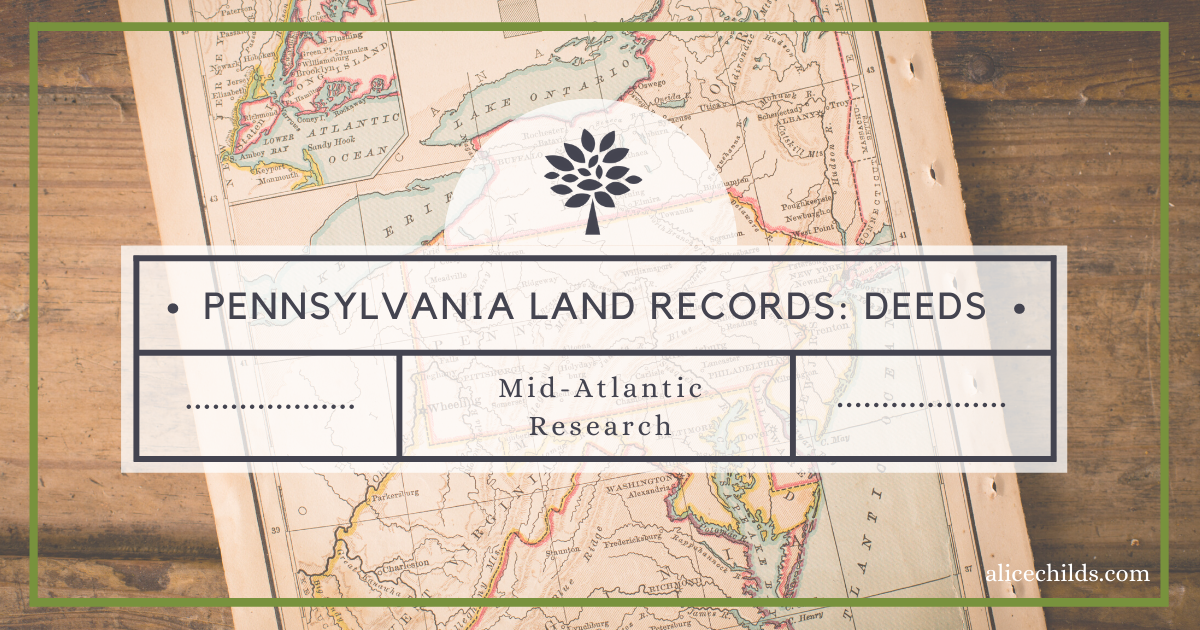
Last week I wrote about the transfer of lands from the family of William Penn and the Commonwealth of Pennsylvania to original owners. These transfers resulted in what are known as “First Titles.” When one of these original owners sold their land to a buyer, the resulting document was a deed.
Parts of a Land Deed
A land deed may include the following genealogically significant information:
- Family names and relationships.
- First name of the wife.
- The first deed in a new place may mention the previous location of residence.
- If a person has moved, the deed for their previous property may tell the new location of residence.
- Deeds often give the names of adjacent property owners, who might be family members.
- Land was often given to soldiers or their widows for military service.
The legal portions of a land deed include the following:
- Date of the land sale, date of recording, and date of verification
- Names of the grantor (seller) and grantee (buyer)
- Granting clause, specifying the interest being transferred and consideration (money)
- Property description (legal land description)
- Recital clause, if present, states how the seller got the land
- Warranty section, stating how the seller will be liable to the buyer in case of later problems
- Execution Section containing acknowledgments, seals, and signatures
Source: The FamilySearch Research Wiki
How to Know if Your Ancestor Owned Land
For deeds to exist for your ancestors, they have to have been landowners. One great resource that provides clues about land ownership is the United States census. According to the National Archives:
- The 1850 census (column 8), 1860 census (column 8), and 1870 census (column 8) indicate the value of real property (land) owned by each person.
- The 1900 census (column 25), 1910 census (column 26), 1920 census (column 7), and 1930 census (column 7) indicate whether the person owned (“O”) or rented (“R”) the home or farm.
- The 1900 census (column 26), 1910 census (column 27), and 1920 census (column 8) indicate whether home and farm owners owned their property with a mortgage (“M”) or free of mortgage (“F”).
- The 1930 census (column 8) indicates the value of home, if owned, or the monthly rental, if rented.
Locating Deeds for Your Pennsylvania Ancestors
FamilySearch has a large collection of Pennsylvania deeds online, but they are not indexed, so knowing the process for locating them is important if you want to be able to find your Pennsylvania ancestors’ records.
To locate a Pennsylvania deed, the first step is to go to the FamilySearch catalog and do a Subject search for “Pennsylvania Land.” You will see land records listed in alphabetical order by county. Scroll down to the county where your ancestors lived, click on that county, and look for the record set containing deeds.
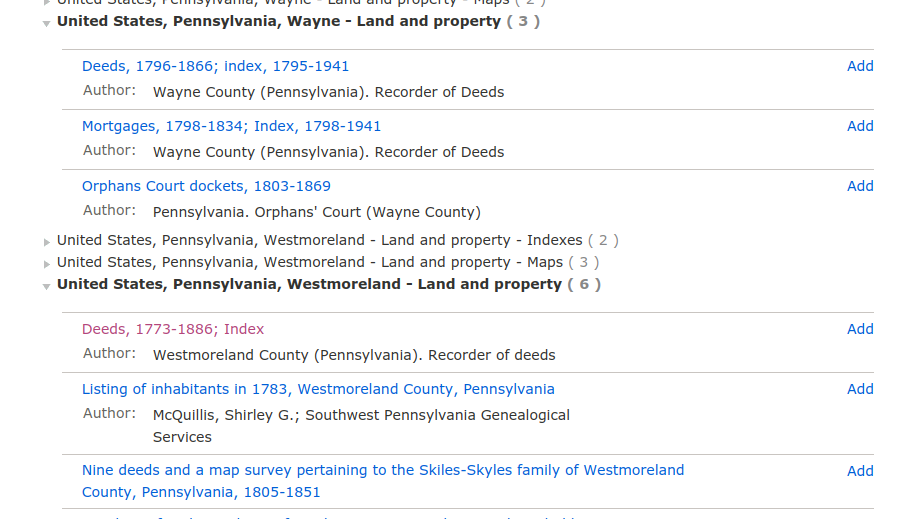
My ancestors lived in Westmoreland County, and I can see that there is a collection titled “Deeds, 1773-1886.” Included in the collection are deed indexes as well as 140 deed books.
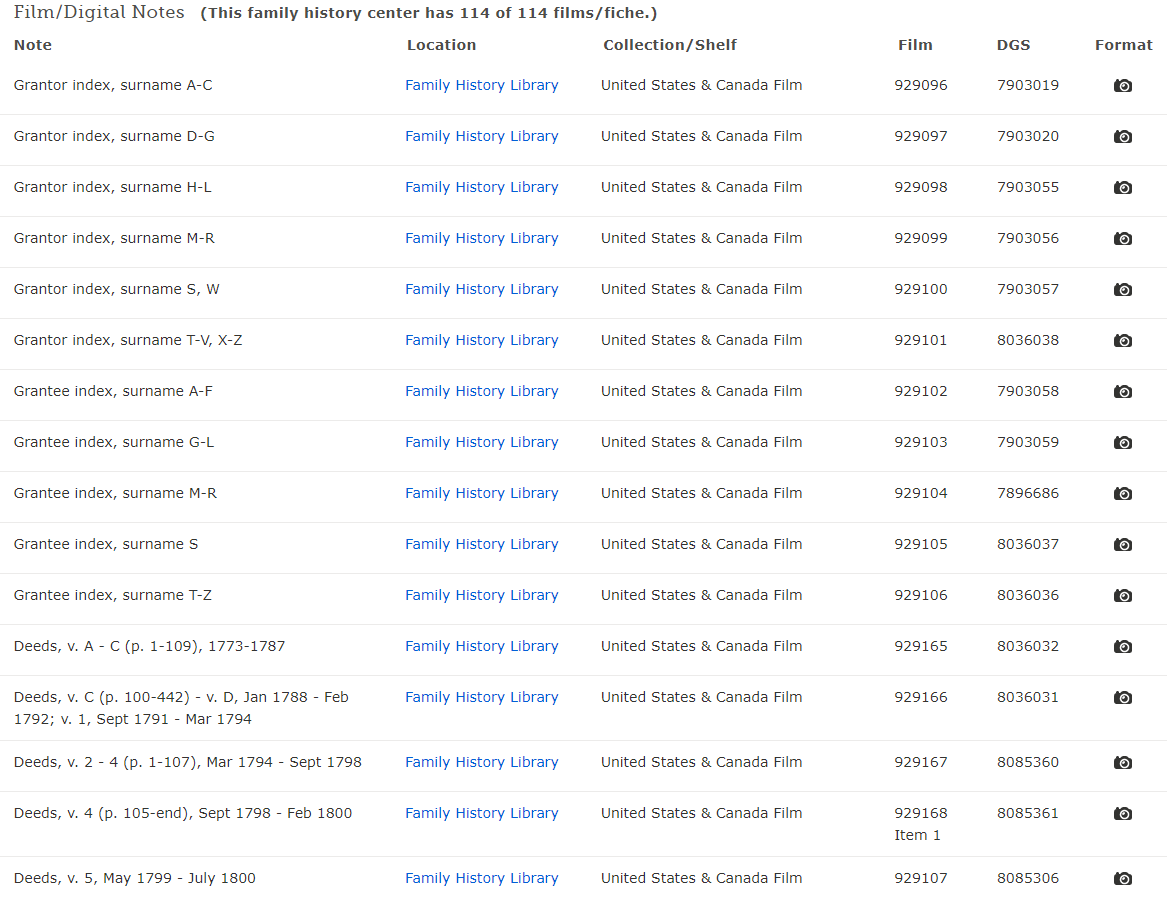
To search for records for your ancestor, first consult both the grantor and the grantee indexes. The grantor is the person selling the property and the grantee is the buyer. These indexes are arranged according to last name, so first select the volume that includes the first letter of the last name of your ancestor. The ancestor I will search for is Daniel Beck. I will search first in the “Grantor Index, surnames A-C.” There may be several volumes on each microfilm reel, so be sure you click on the “Browse Multiple Images” button on the left side of the screen and see if you can see the beginning and end of several different books.
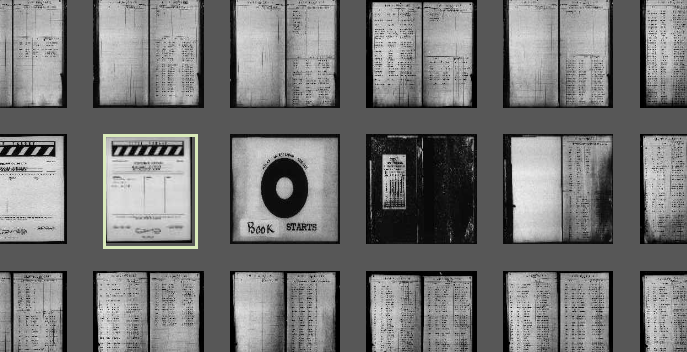
This film does have several volumes on it. The first is Book A. The second is Book B, given names A-J. This is the correct volume because I am looking for Daniel Beck. I want Book B because his surname begins with “B”, and “A-J” is right because his given name begins with “D.”
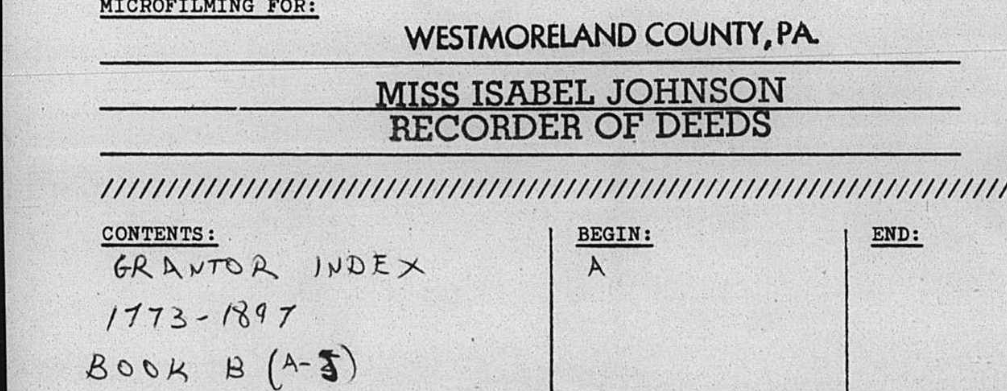
Once you get to the correct volume, you will see that these indexes are organized using the Russell Key Index. A key is included at the beginning of each volume. The key can be somewhat confusing until you understand how it works. Here are the instructions:
Determine the first key letter following the initial (or first) letter in the Family name [surname]. Find section number in the column headed by said key letter, opposite given name initial desired. Names not containing a key letter will be located under “Misc.”
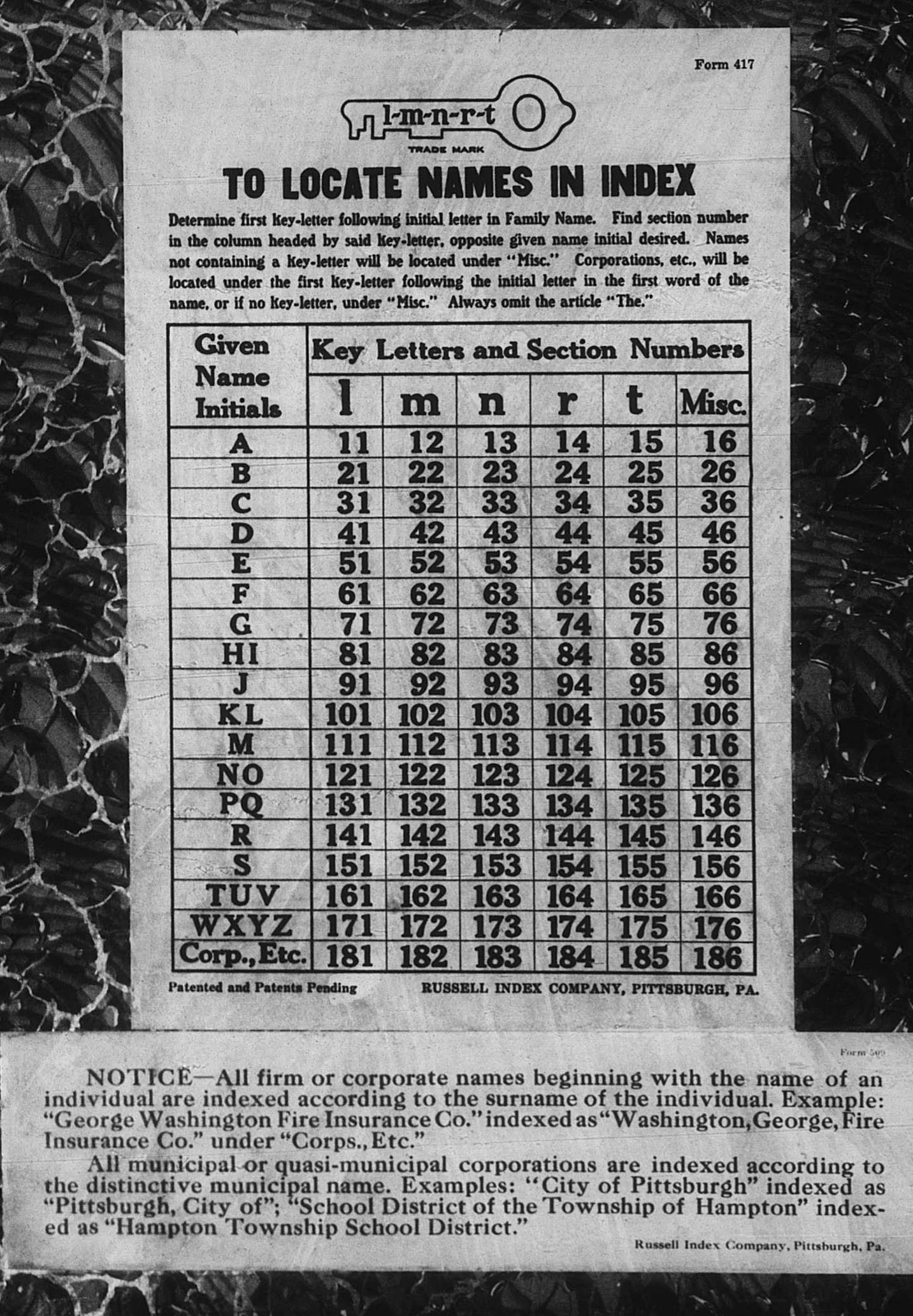
The Family name is Beck, and there are no key letters following the first letter of Beck, so I will look in the “Misc.” Column. The Given name is Daniel, so I will follow the “D” row over to the “Misc.” column and see that Daniel Beck’s records will be located in section 46 of this volume.
The pages in the index are numbered with the section listed at the top of each corner of the page and the page number within that section listed just below the section number. The first step is to navigate to the correct section. Sections can be several pages, or just one page, so jump around within the index until you narrow down to the correct section. In this book, section 46 begins on image 222.

The first page of each section includes another index, which lists every family name included in the section and tells what page deeds associated with that family name begin on. You can see in the image above that this index shows that Beck deeds begin on page 3. When I went to page 3, I was excited to see several deeds belonging to Daniel Beck of Hempfield Township, which is where my ancestor lived.

The next step is to go to the actual deed book. Before leaving the index, be sure to add a link to the index page to your research log or at least make note of the volume and page numbers for each entry that you can refer to so you don’t have to keep navigating through the index every time you want to see which volume to consult for the next deed on the list.
The numbers to the right of the names in this index show the volume number and page, along with the date the deed was recorded and the township in which the land is located.
The first listing for a deed belonging to a Daniel Beck of Hempfield Township in this index states that the deed is recorded in volume 35, page 489. It states that the deed was recorded 20 August 1853, which is the right time and place for my Daniel Beck. It is important to note that deeds may not have actually been recorded for many years after the transaction took place, so don’t discount deeds simply because they were not recorded in the expected time frame.
To go to the deed book, click the back arrow in your browser and you will return to the page that lists all the indexes and deed books. I scrolled down to volume 35 and clicked on it. I was looking for page 489, so I began near the end of the book at image 300 of 342 and noted I was on page 573. I moved backward in the book until I found page 489.

I quickly saw that this deed does not belong to my Daniel Beck. This Daniel was married to a woman named Elizabeth. My Daniel was married to a woman named Hannah at the time this transaction took place, so I returned to the index page and navigated to subsequent deeds following the same steps.
I was able to find several deeds in the grantor index associated with the distribution of Daniel’s land after his passing (he died intestate, or without a will), and a couple of deeds in the grantee index that detailed his purchases of that same land earlier in his life. Through these deeds I was able to confirm my hypothesis that Daniel’s daughter Catherine had died between 1860 and 1870 when she disappeared from the census. One deed was dated 1870, and stated that Leonard Beck, eldest son of Daniel and Hannah, had been appointed guardian of Emma Weaver and Sarah Weaver, children of Daniel’s deceased daughter Catherine. This was a great discovery!
As you can see, deeds can be a valuable resource in our genealogical research. While this article focuses on Pennsylvania deeds, the process for locating deeds in other states is similar. I hope you will have success in discovering deeds for your ancestors. I would love to hear about your discoveries as you #GatherYourTribe. Leave a comment below!

You have inspired me to look up deed records for my Allegheny County ancestors. It’s really kind of fun!
I’m glad you gained inspiration from my post! I hope you make some great discoveries!